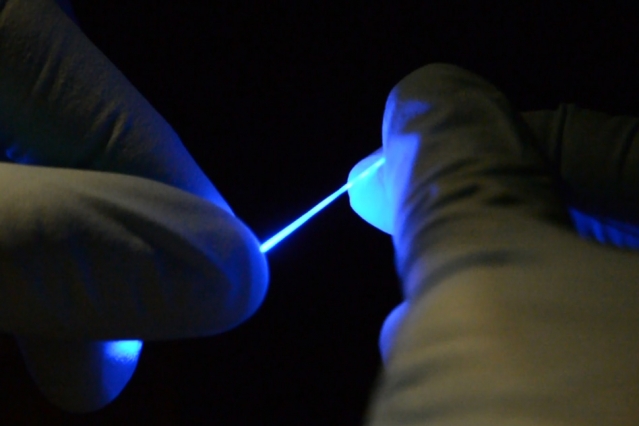Implantable fibers are already being used by scientists to stimulate specific targets in the brain and to monitor electrical responses by neurons; however, similar studies in the nerves of the spinal cord, which might ultimately lead to treatments to alleviate spinal cord injuries, have been more difficult to carry out. This is because the spine flexes and stretches as the body moves, and the relatively stiff, brittle fibers used today could damage the delicate spinal cord tissue.
Center for Sensorimotor Neural Engineering (CSNE) members at the Massachusetts Institute of Technology (MIT) and the University of Washington (UW) are part of a multi-institution team that has developed a new, flexible, rubber-like fiber, which can be used to study spinal cord neurons and potentially restore bodily function.
In a recent paper published in the journal Science Advances, the research team describes the implant they have developed. This rubber-like fiber can flex and stretch while simultaneously delivering both optical (light) impulses, for optoelectronic stimulation, and electrical connections, for stimulation and monitoring of neurons.
“I wanted to create a multimodal interface with mechanical properties compatible with tissues for neural stimulation and recording,” says CSNE student member at MIT, Chi (Alice) Lu. “The spinal cord is not only bending but also stretching during movement.”
According to Polina Anikeeva, CSNE deputy faculty director and professor at MIT, the spinal cord undergoes stretches of approximately 12 percent during normal, everyday movement, so flexibility is a must. These new fibers are not only stretchable but also very flexible.
“They’re so floppy, you could use them to do sutures, and do light delivery at the same time,” Anikeeva said. “There are many different types of cells in the spinal cord, and we don’t know how the different types respond to recovery, or lack of recovery, after an injury.” These new fibers, the researchers hope, could help to fill in some of those blanks.
For more information about this study, read the full article at MIT News.
Image:

